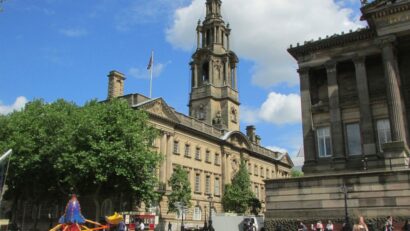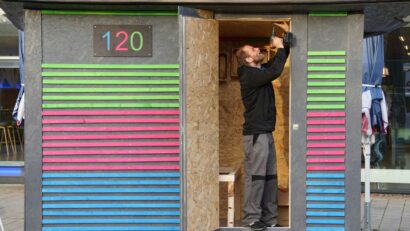
Amsterdam Airport Schiphol bans Private Jets and Night Flights
The private jet ban is set to into effect at the end of 2025. This will lead to “more quiet, clean and better air travel” an airport official said in a statement. Other than that, larger and therefore louder aircraft like the Boeing 747 should no longer be commissioned to land at the Dutch airport. Local inhabitants and climate activists welcome Schiphol’s move towards better quality of live in the Amsterdam suburb. The wake of this decision now echoing through Europe as more cities want to push for similar policies in the future.
Speaking in numbers, this would mean about 10,000 fewer aircraft per year to land at Schiphol, their flights being cancelled with the ban. Recently the government also implemented directives for the airport to reduce the flights from 500 to 440 thousand flights, cutting an additional 40 thousand flights, starting November 2023.
“For too long, we have only thought about growth and not enough about the associated costs. We need to be sustainable for our employees, the environment and the world.”, Says Ruud Sondag, CEO Royal Schiphol Group.
[embedded content]
Lawsuit against guidelines – airlines fear reduced profits
Travel agencies and Airlines have complained about the changes. The Dutch Airline KLM, who’s main airport is Schiphol, was surprised, claiming that they had wished for coordinated action across the entire air travel industry. But the lack of actual plans stemming from big airlines might explain why Schiphol’s decision not to wait.
The shrinking of flight numbers at Schiphol was followed by a lawsuit by KLM and four other airlines in fear of having reduced profits. Early April 2023, a Dutch court now overruled the directive due to an issue regarding formalities in the law-making process.
Climate activists are disappointed about the court’s ruling, setting back the efforts of CO2 reduction in the Netherlands drastically. Their hopes now lie with the airport’s lone push to at least save a fourth of the CO2 intended by the government.
Private jets as climate killer – Germany to consider ban in the future
German air travel expert Sussane Menge sees private jets as a “great climate injustice” and calls for airports in Germany to implement similar directives to Schiphol to combat rising CO2 emissions.
“It is no longer plausible that many people are now combating global warming by insulating houses and replacing heating systems, while a small minority is pumping out jet fuel as if there were no tomorrow.” – German air travel expert Susanne Menge.
Now the German Greens have announced that they are considering proposing a similar with support from opposition party “die Linke” (the Left) though the future of this legislation is unclear.
Most wealth – Most emissions
And the numbers add up, considering that in 2019, a year before the Private jet boom properly kicked off, private jets already accounted for 899,000 metric tons of carbon dioxide (CO2). In comparison, in the same year, the CO2 emissions on a global average per person accounted for about 4.78 tons per year.
A person with average carbon emission would take more than 627 thousand years to produce the amount of CO2 a billionaire emits in a Year. (Foto: Nate / Unsplash)
Considering these facts, it gets even more baffling when one considers that these 899 thousand tons of carbon dioxide is emitted by just about 22 thousand jets. Meaning that these approximately 22,000 private aircraft owners emit equally to about 188,000 people. And that’s only with their jets, accounting for other luxuries, these numbers can rise up to a staggering 3 million tons per year for the top 1 percent.
A person with average carbon emission would take more than 627 thousand years to produce the amount of CO2 a billionaire emits in a Year. Considering the shrinking CO2 budget, the rising temperatures and growing wealth inequality, considering bans like this might be a necessity all over Europe in the future. Läs mer…








